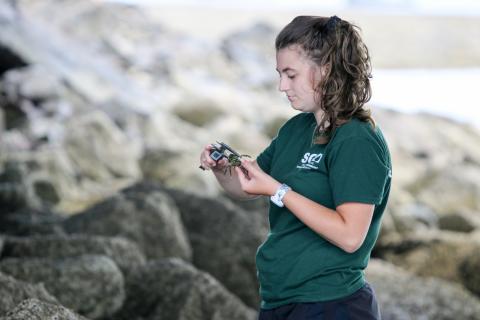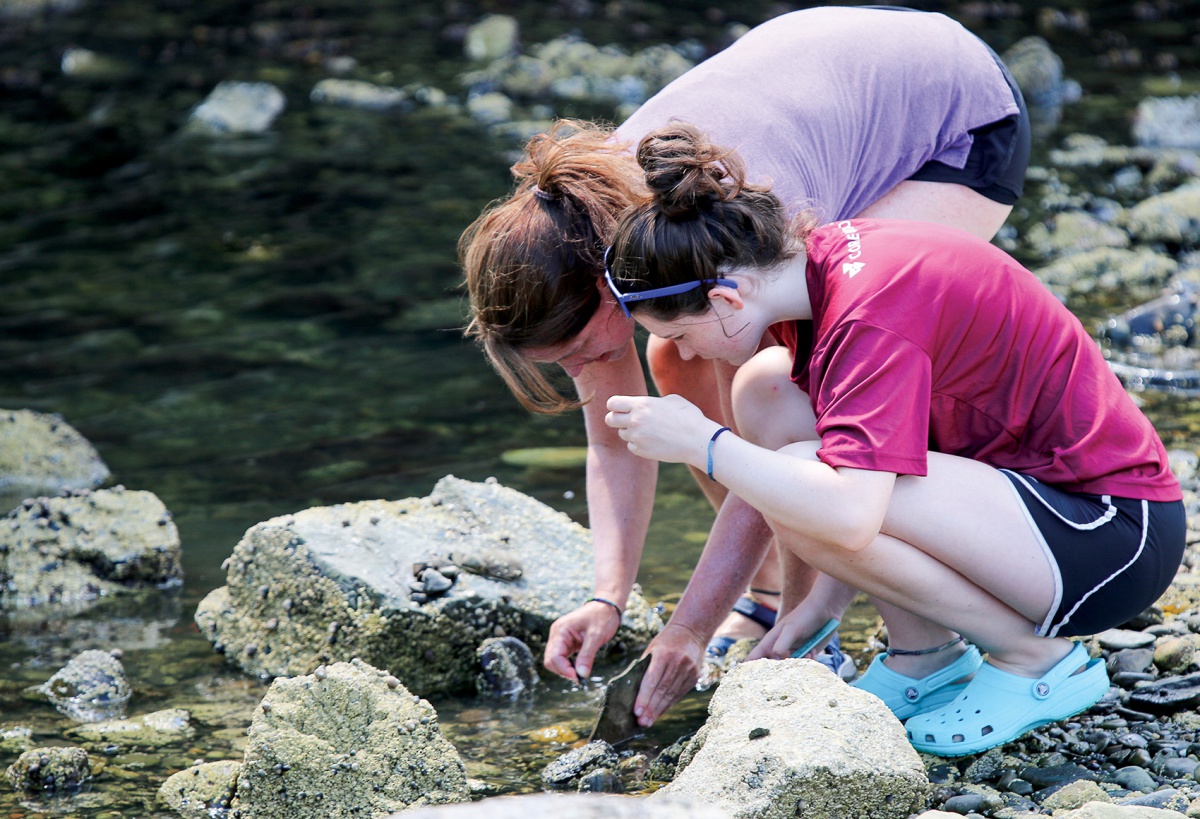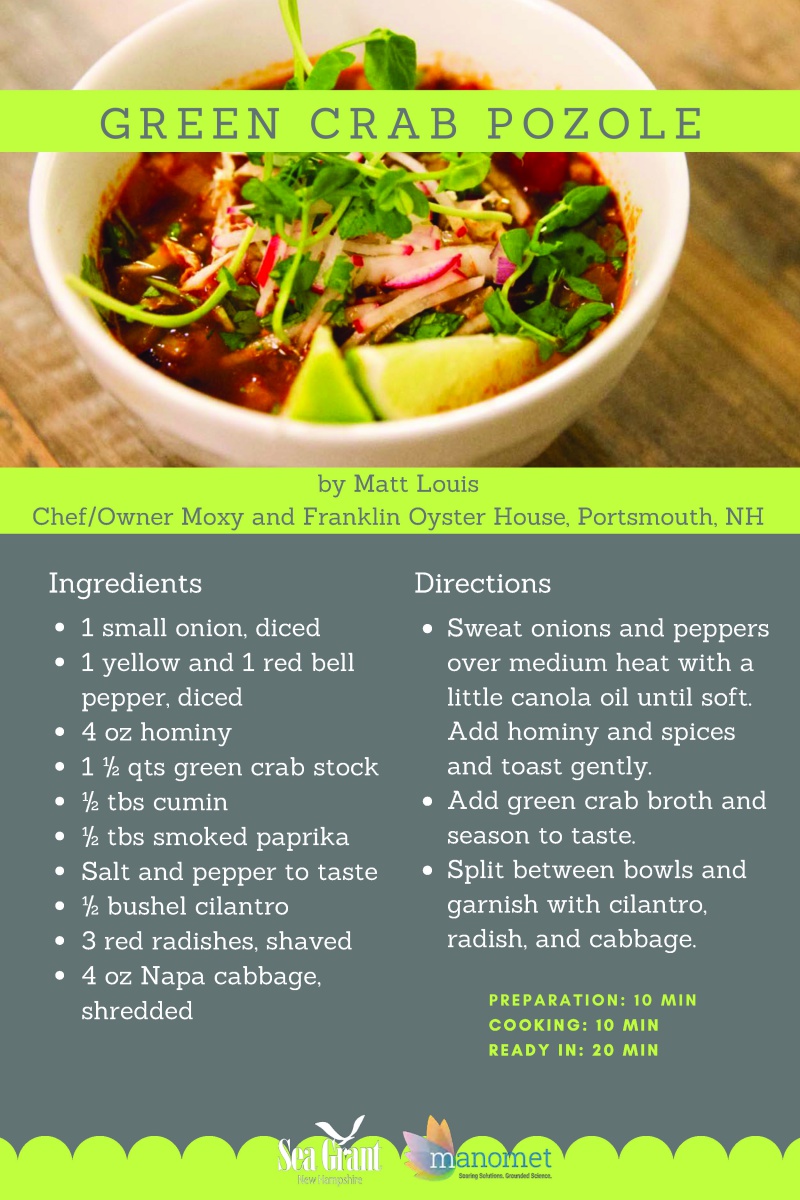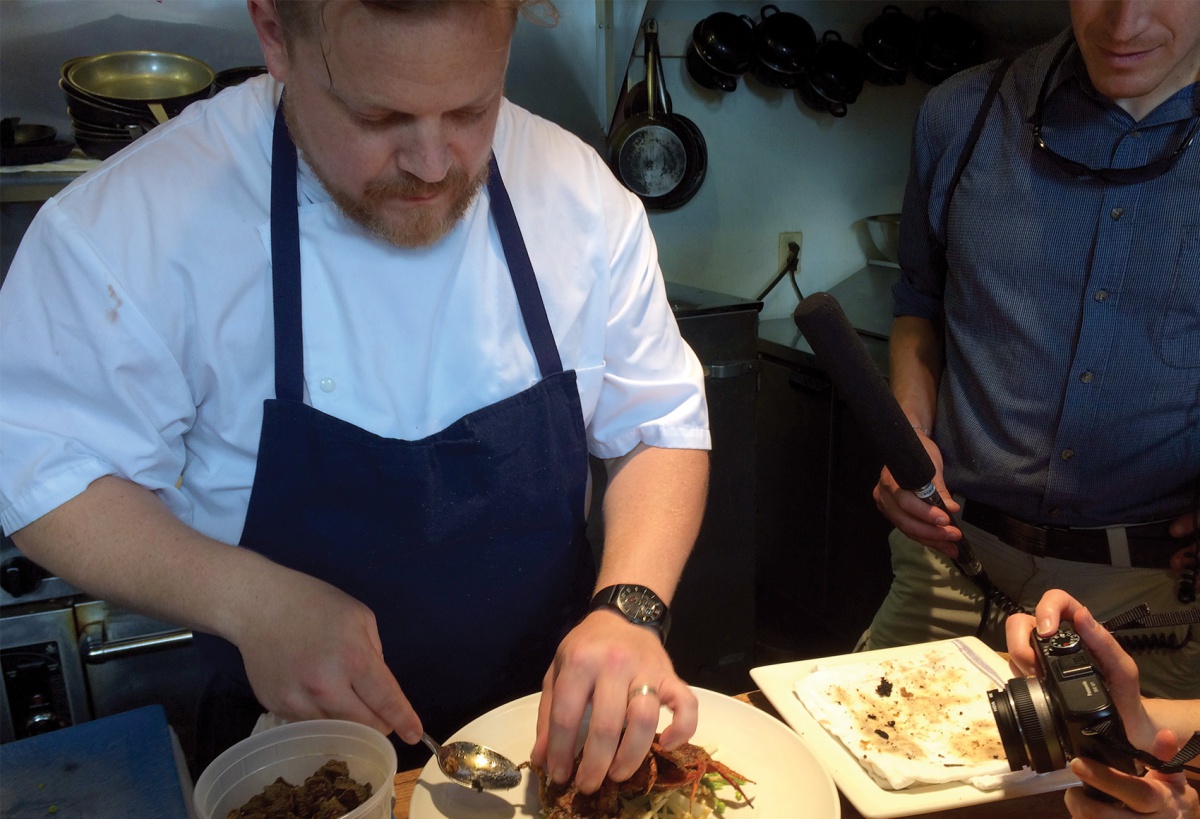Look What’s Cooking

It’s 93 degrees, hazy and humid at Rye Harbor in late July. A small group gathers by the side of the road near a bridge spanning the intertidal waters of the Atlantic Ocean. This crowd isn’t looking for an escape from the heat, though. Their hunt is for something different entirely: European green crabs (carcinas maenas), members of an invasive species that has wreaked ecological and economic havoc along the New England coast for decades.
Wells Costello, citizen science outreach coordinator for NH Sea Grant Extension, welcomes the group of volunteers by explaining how the data they collect will enhance ongoing research efforts. Their charge for the day? Catch as many green crabs as possible, measure carapace size (upper section of the shell), note sex and physical features, document habitat and evaluate the state of each shell.
“By participating and helping us collect data they are making a difference in their community,” Costello says. “It’s empowering. We are bringing awareness to the issue and backing it up with research-based science and an authentic field experience for volunteers.”
Within minutes, the first crab is caught—a tiny, two-centimeter female crab. Taylor Merrick, one of four interns working on NH Sea Grant’s green crab project this summer, helps the group document their first find. Before long, the bottoms of five-gallon buckets click and clack with scuttling crabs. Volunteers call out their catches, fill in data sheets and share hunting strategies.
“I like to get my hands in different sorts of ecosystems, and this seemed like a way to connect with our shoreline,” says Heather Flewelling of Exeter. She regularly volunteers for Extension as a natural resources steward. “I also thought it would be a chance to engage in citizen science with my daughter, Emma. It was a great to share and connect with her.”

Green crabs arrived on the shores of Cape Cod in the mid-1800s from European ships and have established themselves as a pervasive nuisance from Massachusetts all the way north to Prince Edward Island in Canada. The invasive species preys on soft-shell clams, and the economic impact of the diminished clam population has been deeply felt by New England fishermen. Green crabs add weight without value to catches and suck up labor resources with the time and effort it takes to sort them out from the species that make money. Green crabs also harm eelgrass, an estuarine plant that provides important habitat and protection to other native species. As ocean temperatures have warmed, green crab populations have increased.
In response to these concerns, Gabriela Bradt, fisheries specialist for Extension and NH Sea Grant, created a comprehensive research, monitoring and outreach program called the NH Green Crab Project. Bradt is exploring the feasibility of a soft-shell green crab market and fishery for the Granite State.
.jpeg)
Green crabs grow by shedding their shells and growing new ones — a process known as molting. The best time to process green crabs for consumption is before the molting begins. Data gathered by citizen scientists, like the green crab hunters in Rye Harbor, provides valuable information about when and where green crabs are the most abundant in their premolt phase. Currently, there is no established commercial market or fishery for these invaders.
“The hope is that we can find enough information and data to streamline the fisheries process, recruit fishermen and get soft-shell green crabs into restaurants and markets more readily,” Bradt says. “Hopefully we’ll see some of our other species, like soft-shell clams, recover.”

Bradt has worked extensively with partner organizations, volunteers, interns, industry members, local chefs and foodies to create opportunities to familiarize the public with green crabs as a delicious addition to the area’s cuisine.
Green crabs are not as large as Dungeness or Jonah crabs, species commonly served in restaurants, but the rewards are worth the hard work required to harvest their delicate meat. They provide an excellent ingredient for a rich stock — the basis of Portsmouth chef Matt Louis’ green crab pozole — one of several recipes developed by local chefs and available on NH Sea Grant’s website. During Green Crab Week in July, several New Hampshire restaurants offered green crab specials on their nightly menus, including the Black Trumpet in Portsmouth and The Joinery in Newmarket. Generating excitement and demand for dishes like these will hopefully increase their popularity and drive market development
“Green crabs aren’t being utilized. They are edible and quite delicious,” Bradt explains. “By combining our research efforts with input from and outreach to different groups of stakeholders, we can mitigate the impact of invasive green crabs and boost economic value.”

